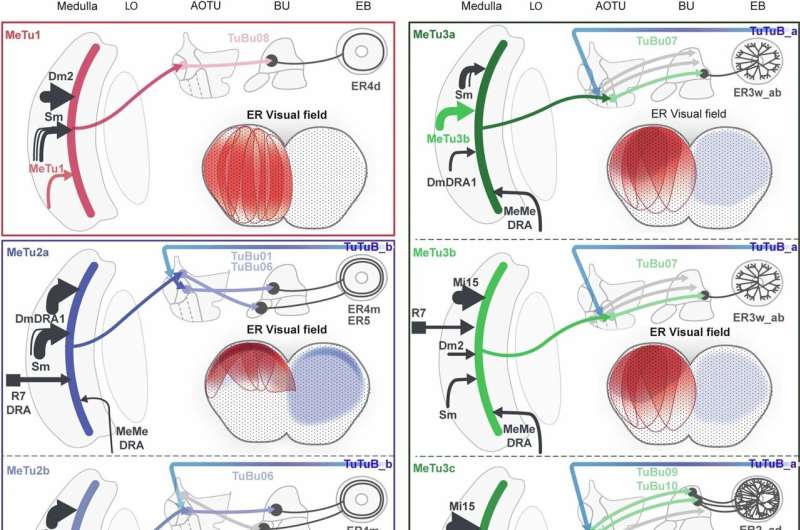Neuroscientists at UC Santa Barbara have achieved a remarkable feat by reconstructing the entire anterior visual pathway of a fruit fly. This complex series of connections between the insect’s eyes and the navigation center of its brain holds the key to understanding how animals like fruit flies make sense of their surroundings and find their way around. This study, part of a larger effort to map the neuronal wiring of the entire fruit fly brain, brings us closer to unraveling the intricacies of animal brains and may even serve as a model for autonomous vehicle navigation.

Decoding the Fruit Fly’s Visual Pathway
Using a combination of artificial intelligence and manual proofreading, the research team led by systems biologist Sung Soo Kim has reconstructed the relationships between more than 3,000 neurons in the fruit fly’s anterior visual pathway. This unprecedented level of detail provides valuable insights into how the insect’s brain processes visual information and translates it into navigation cues.
The fruit fly’s brain is considered a good candidate for this research due to its relatively simple structure, particularly the ‘compass neurons’ located in the donut-shaped ‘ellipsoid body’ deep within its brain. These neurons form a ring and are responsible for encoding the fly’s sense of direction. By understanding how visual inputs from the eyes are processed and integrated by these compass neurons, the researchers hope to unravel the neural circuitry underlying animal navigation.
Unveiling the Complexity of Brain Connections
As Kim explains, the major challenge in systems neuroscience is understanding how neurons interact and generate the various perceptions, cognitive processes, and motor commands that govern animal behavior. The fruit fly’s brain offers a useful model for this, as a single stimulus can result in a wide array of responses as the information travels through the different stages of the brain.
For instance, when you feel something pressing against your skin, the initial sensory input is processed by peripheral neurons. However, as this touch information rapidly makes its way through the brain, it is modified by a multitude of factors, including mood, activity, and the source of the pressure. Consequently, your reaction to that touch can vary significantly. This complexity is also at play in the realm of animal navigation, where a constant stream of sensory cues and feedback information is used to create representations of the environment and make decisions about how to reach a desired destination.
Insights into Animal Navigation and Potential Applications
The detailed connectivity data obtained from the reconstruction of the fruit fly’s anterior visual pathway can be used to create computational models that may shed light on how animals, including humans, navigate their environments. This knowledge could also serve as a model for the development of autonomous vehicle navigation systems, potentially eliminating the need for reliance on GPS.
The research team, including co-lead authors Dustin Garner and Jennifer Lai, has made significant strides in understanding the specific neuronal responses to various visual stimuli, such as vertically elongated objects or smaller, more circular visual areas. This information can be used to predict the visual features that fruit flies use for navigation, potentially leading to breakthroughs in our understanding of animal behavior and cognition. As the researchers continue to explore the color sensitivity of the ‘ring neurons,’ the final relay in the anterior visual pathway, even more insights into the fruit fly’s navigational abilities may emerge.
